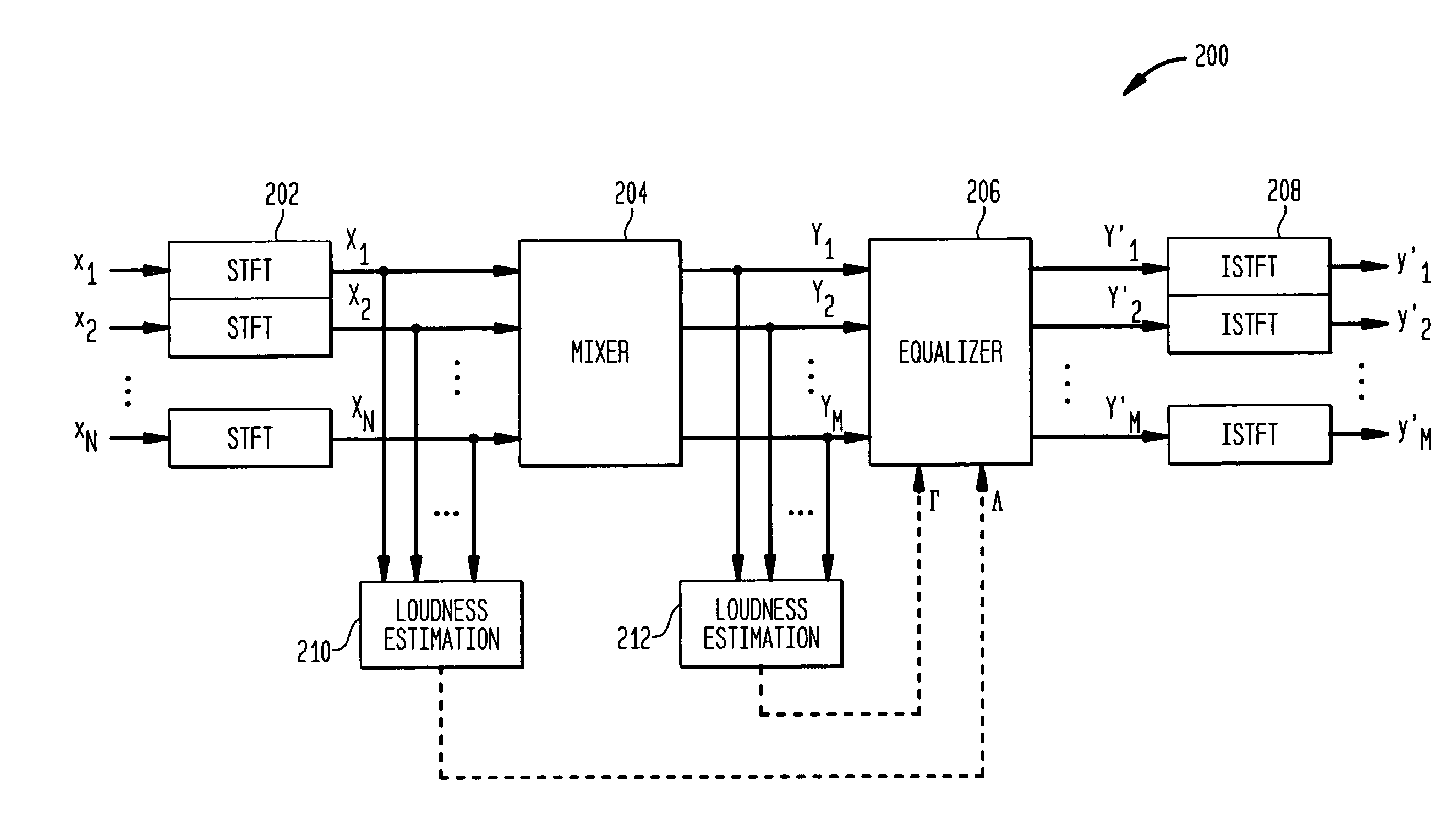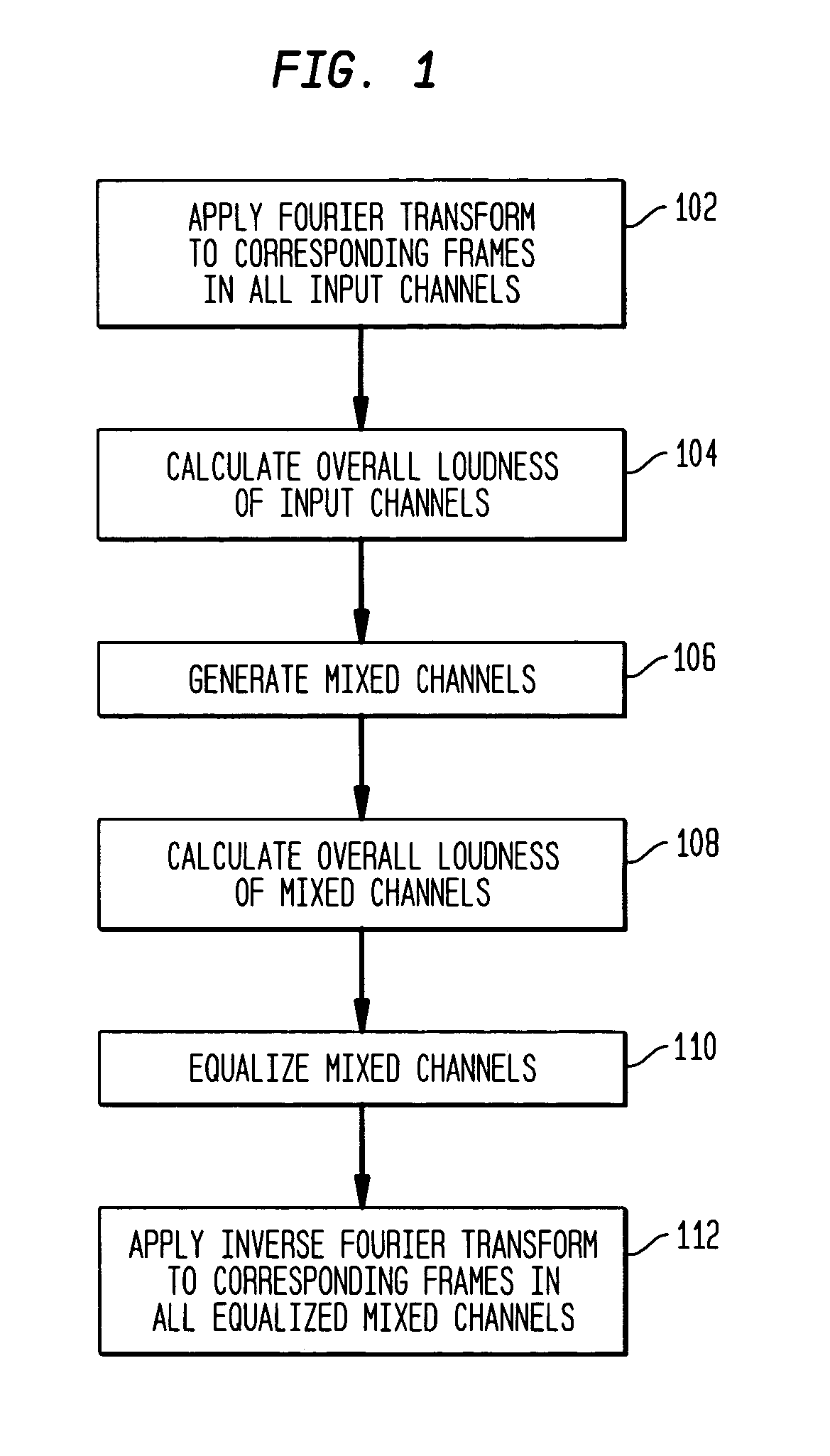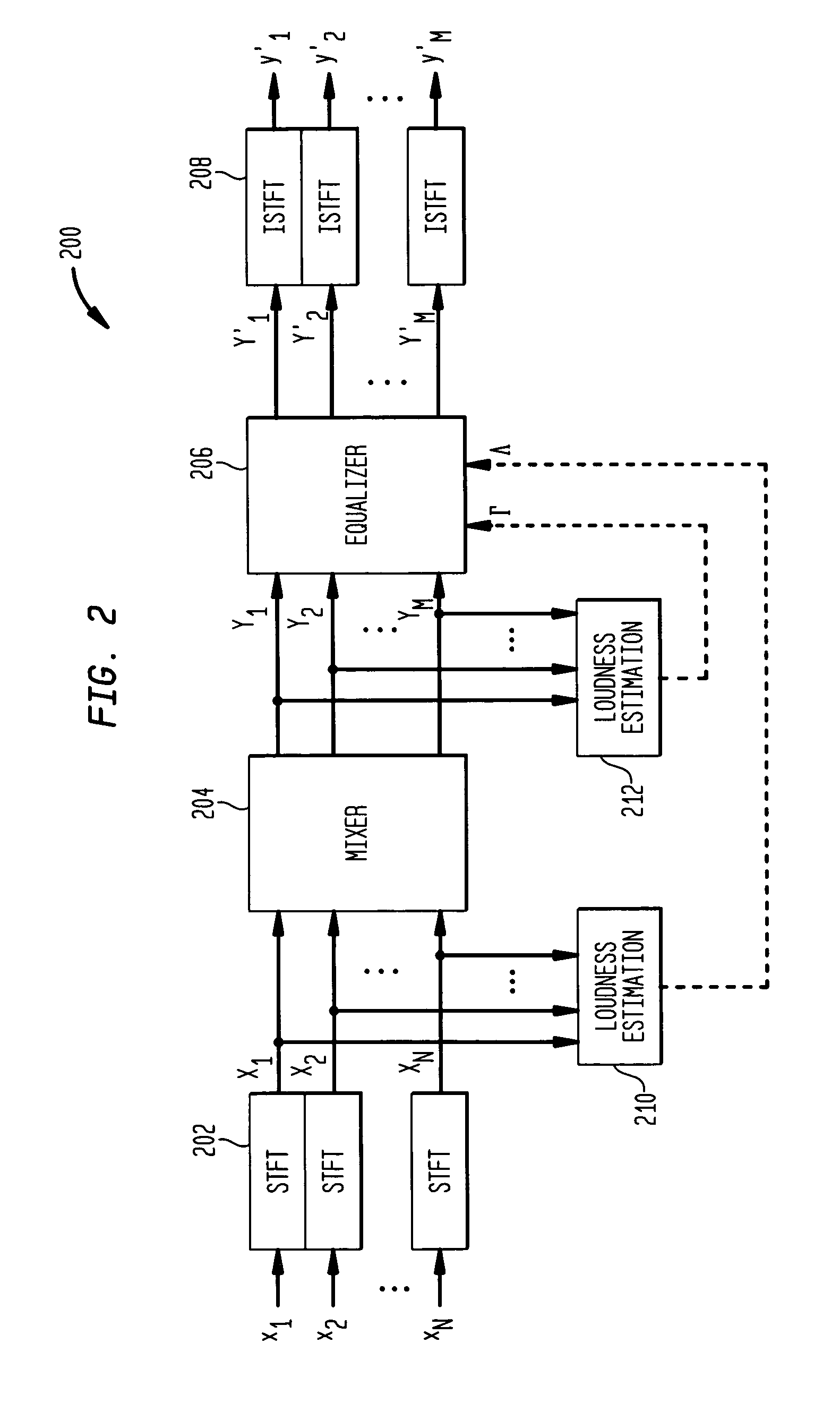Equalization for audio mixing
a technology of equalization and mixing, applied in the field of audio signal processing, can solve the problems of loss of spectral energy and/or loudness, inability to apply, and inability to provide satisfactory results
- Summary
- Abstract
- Description
- Claims
- Application Information
AI Technical Summary
Benefits of technology
Problems solved by technology
Method used
Image
Examples
Embodiment Construction
[0018]FIG. 1 shows a flow diagram of an equalized mixing procedure, according to one embodiment of the present invention. In particular, the processing of FIG. 1 corresponds to the mixing of an N-channel input signal to generate an M-channel output signal, where the input signal has N time-domain channel signals xn(t), n=1, . . . , N, and the output signal has M time-domain channel signals y′m(t), m=1, . . . , M. For down-mixing applications, N>M≧1. For example, when down-mixing a stereo input signal to a mono output signal, N=2 and M=1. For up-mixing applications, 1≦N2).
[0019]According to the processing of FIG. 1, a short-time Fourier transform (STFT) is applied to frames of each time-domain input channel signal (step 102), where the complex STFT transform of a short-time frame with index k of input channel signal xn,k(t) is denoted as Xn,k(ω). In order to improve the spectral resolution, the STFT transform preferably includes the application of a window function when generating ea...
PUM
 Login to View More
Login to View More Abstract
Description
Claims
Application Information
 Login to View More
Login to View More - R&D
- Intellectual Property
- Life Sciences
- Materials
- Tech Scout
- Unparalleled Data Quality
- Higher Quality Content
- 60% Fewer Hallucinations
Browse by: Latest US Patents, China's latest patents, Technical Efficacy Thesaurus, Application Domain, Technology Topic, Popular Technical Reports.
© 2025 PatSnap. All rights reserved.Legal|Privacy policy|Modern Slavery Act Transparency Statement|Sitemap|About US| Contact US: help@patsnap.com



